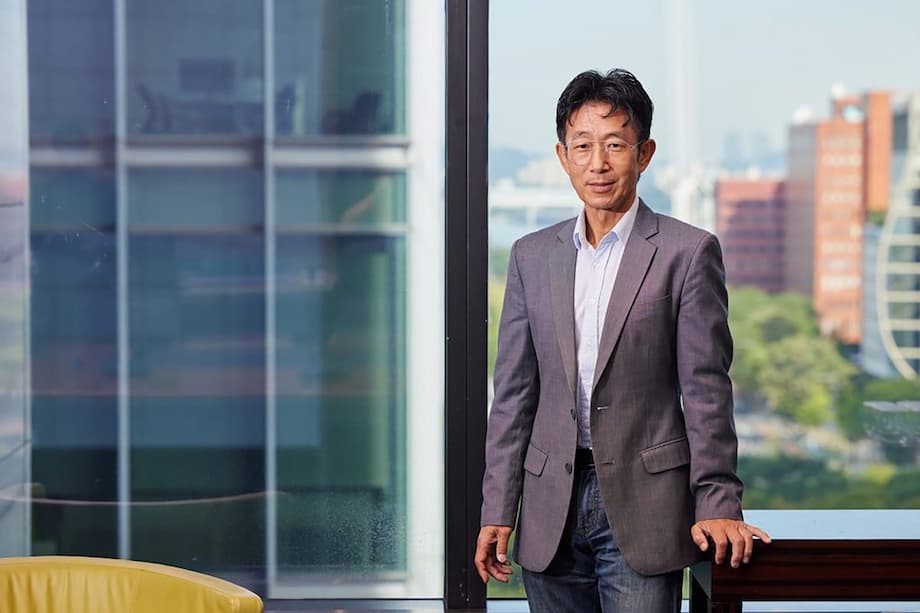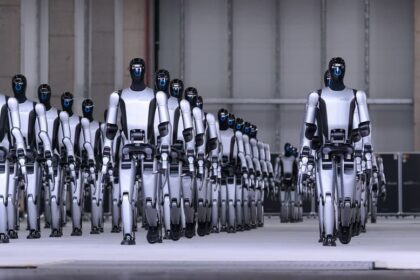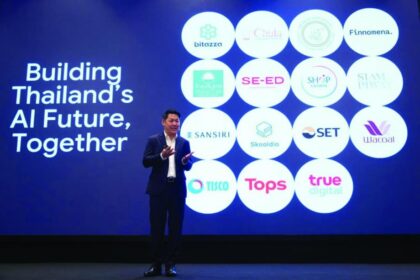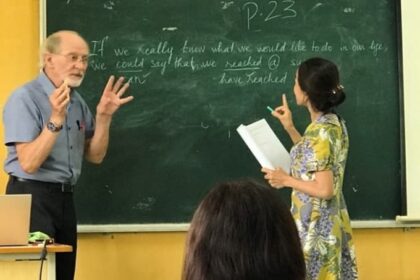Zhou Ming’s Return: A Major Shift in Global Engineering
In a move that is sending ripples through the global aerospace and engineering software industries, Zhou Ming—one of the world’s foremost experts in computational engineering and the mastermind behind critical software for the Boeing 787 and Airbus A380—has left his senior leadership post at US-based Altair to return to China. Zhou has joined the Eastern Institute of Technology (EIT) in Ningbo as chair professor and the inaugural dean of its College of Engineering, where he is already assembling a world-class research team. His decision marks a significant moment for both China’s ambitions in high-end manufacturing and the international flow of scientific talent.
Who Is Zhou Ming?
Zhou Ming’s name may not be widely known outside engineering circles, but his influence is felt every time a modern aircraft takes flight. After a decade of rigorous study at Beihang University, China’s leading aerospace engineering institution, Zhou moved to Germany in 1988 for doctoral and postdoctoral research at the University of Duisburg-Essen. There, he specialized in structural mechanics and optimization—a field that would become his lifelong passion.
In 1998, Zhou joined Altair, a global leader in engineering software and computational science. Over more than two decades, he rose to global senior vice president and chief engineer, directly contributing to the design of iconic aircraft such as the Boeing 787 and Airbus A380. His work has also impacted the energy, automotive, and supercomputing sectors, making him one of the most influential engineers of his generation.
Engineering Software: The Backbone of Modern Industry
At the heart of Zhou’s career is his pioneering work in engineering software—specifically, simulation-driven design and topology optimization. These technologies have revolutionized how complex products are conceived and built, shifting the industry from traditional computer-aided design (CAD) to computer-aided engineering (CAE).
Topology optimization, Zhou’s specialty, is a computational method that generates the most efficient material layout for a given design space and set of loads. Instead of relying solely on an engineer’s intuition, this approach uses algorithms to simulate thousands of possibilities, producing lightweight and structurally robust designs. This is crucial for industries like aerospace, where every kilogram saved translates into significant fuel savings and environmental benefits.
As Zhou explained in a recent statement on his personal social media,
“I’m excited to drive frontier research addressing global challenges while inspiring the next generation of technology innovators. It’s incredibly energizing to be part of a mission far larger than ourselves.”
His leadership at Altair was instrumental in embedding simulation-driven generative design into industrial workflows, enabling the creation of lighter, safer, and more efficient aircraft and vehicles. This approach is now standard in sectors striving for performance efficiency and sustainability.
Why Zhou Ming’s Move Matters
Zhou’s return to China is more than a personal career decision—it is emblematic of a broader shift in the global scientific landscape. For years, China has been investing heavily in attracting top-tier talent from abroad, aiming to boost its capacity for independent innovation and reduce reliance on foreign technology. Zhou’s appointment as the first dean of EIT’s College of Engineering is a strategic coup for the young institution and for China’s ambitions in high-end manufacturing.
The Eastern Institute of Technology, located in the Yangtze River Delta near Shanghai, is a newly established private university with big plans. Despite enrolling just 70 students in its inaugural undergraduate class, EIT has already recruited 16 academician-level faculty members, including Zhou. The university’s mission is to create a hub for next-generation technology development, applied research, and entrepreneurial ventures. Zhou’s leadership is seen as central to this vision.
Building a World-Class Research Team
According to EIT, Zhou is tasked with building a research and development team focused on core engineering software and optimization design technology. The goal is to empower China’s independent innovation and enhance the competitiveness of its high-end manufacturing sector. Zhou has already begun assembling a team specializing in simulation-driven design, topology optimization, and software applications for aerospace, automotive, and energy industries.
His expertise is expected to accelerate breakthroughs in design automation, renewable energy systems, and advanced manufacturing. By uniting advanced research with practical applications, Zhou aims to train a new generation of engineers who can compete on the global stage.
From Altair to EIT: A Career of Global Impact
Zhou’s journey from China to Germany, then to the United States, and now back to China, reflects the increasingly international nature of scientific research. At Altair, he was instrumental in driving the transition from CAD to CAE, embedding simulation and optimization into the heart of industrial design. His work enabled the creation of lighter, more efficient structures, directly impacting the design of the Boeing 787 and Airbus A380—two of the most advanced commercial aircraft ever built.
His achievements have been widely recognized. Earlier this year, Zhou was elected to the US National Academy of Engineering for his pioneering contributions to topology optimization and simulation-based generative design. He also serves as editor-in-chief of the International Society for Structural and Multidisciplinary Optimization’s official journal, further cementing his influence in the global engineering community.
What Is Topology Optimization?
For readers unfamiliar with the term, topology optimization is a mathematical approach that determines the best way to distribute material within a given design space. Instead of starting with a preconceived shape, engineers define the performance requirements and constraints, and the software iteratively removes unnecessary material. The result is a structure that is both lightweight and strong—ideal for applications where efficiency is paramount.
This technology is now essential in aerospace, automotive, and energy industries, where reducing weight without compromising safety or performance is a constant challenge. Zhou’s work has helped make these advanced methods accessible to engineers worldwide, transforming how products are designed and manufactured.
The Broader Implications: Talent Flow and Innovation
Zhou Ming’s move is part of a larger trend of international talent mobility, as countries compete to attract top scientific minds. China’s efforts to lure back overseas experts—often referred to as “sea turtles”—are reshaping the global innovation landscape. By offering attractive positions, research funding, and the opportunity to build new institutions from the ground up, China is positioning itself as a leader in science and technology.
For the global engineering community, Zhou’s return highlights the importance of knowledge transfer and collaboration across borders. His experience in integrating theoretical research with industrial applications will be invaluable as China seeks to develop its own engineering software and reduce dependence on foreign technology.
Industry and Academic Reactions
Industry observers see Zhou’s move as both a strategic gain for China and a sign of shifting dynamics in global innovation. The Eastern Institute of Technology has described his appointment as key to its goal of building state-of-the-art research facilities and boosting China’s self-reliance in engineering technologies. As one aviation industry analyst noted,
“Zhou Ming’s expertise in simulation-driven design and optimization is exactly what China needs to compete at the highest levels of aerospace and advanced manufacturing.”
Academic colleagues have also praised Zhou’s commitment to nurturing young talent. As editor-in-chief of a leading international journal, he has championed fairness, transparency, and the dissemination of cutting-edge research. His leadership at EIT is expected to foster a culture of innovation and excellence.
China’s Ambitions in High-End Manufacturing
China’s push to become a global leader in high-end manufacturing is well underway. The government has identified advanced engineering software, simulation, and optimization as critical technologies for achieving self-reliance and global competitiveness. By recruiting experts like Zhou Ming, China aims to accelerate the development of indigenous solutions that can rival or surpass those from established players in the US and Europe.
The Eastern Institute of Technology is at the forefront of this effort. With a faculty roster that includes some of the world’s top engineers and scientists, the university is building a start-up ecosystem to support applied research and entrepreneurial ventures. Zhou’s role as dean of the College of Engineering puts him at the center of this ambitious project.
What’s Next for Zhou Ming and EIT?
In the coming years, Zhou is expected to lead research initiatives that bridge the gap between theoretical advances and real-world applications. His focus on simulation-driven design, topology optimization, and engineering software will support China’s high-end manufacturing industry and accelerate breakthroughs in fields such as aerospace, automotive, and renewable energy.
By training a new generation of engineers and fostering global collaboration, Zhou’s leadership at EIT could have far-reaching effects—not just for China, but for the entire field of engineering.
In Summary
- Zhou Ming, a leading engineer behind the Boeing 787 and Airbus A380, has left US-based Altair to join China’s Eastern Institute of Technology as chair professor and dean.
- He is renowned for pioneering work in simulation-driven design and topology optimization, technologies that have revolutionized aerospace and automotive engineering.
- Zhou’s move is part of China’s broader strategy to attract top scientific talent and boost its capacity for independent innovation in high-end manufacturing.
- At EIT, Zhou will build a world-class research team focused on engineering software and optimization, aiming to train the next generation of technology innovators.
- His return signals a shift in global talent flows and underscores the growing importance of international collaboration in science and technology.












